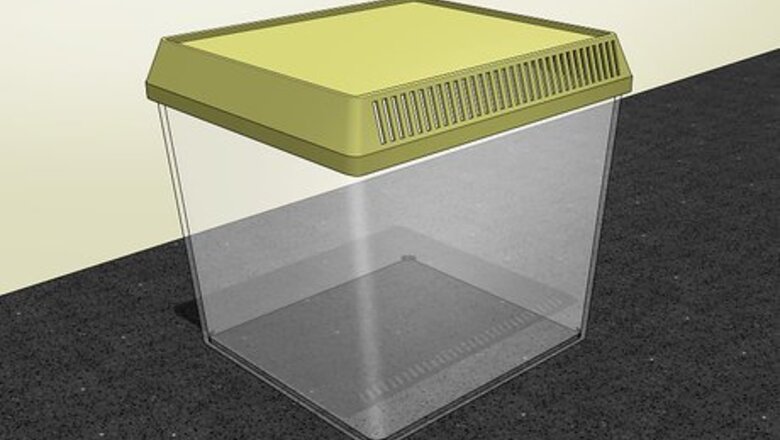
views
Housing the Grasshoppers
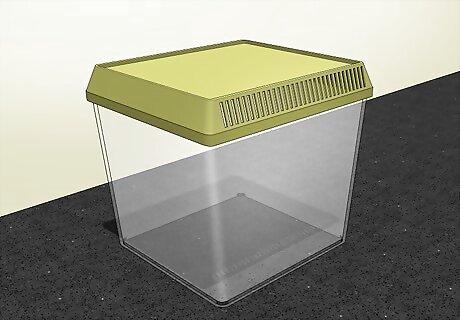
Use a medium-sized aquarium or terrarium with a ventilated lid. You need a container that's big enough to keep your grasshoppers comfortable, has enough ventilation to allow in fresh air, and can be closed up to prevent them from escaping. A glass aquarium also allows you to be able to see the grasshoppers well. You can find aquariums and terrariums at your local pet supply store or online. Use at least a 5 US gal (19 L) aquarium or terrarium so your grasshoppers have enough room to move around.
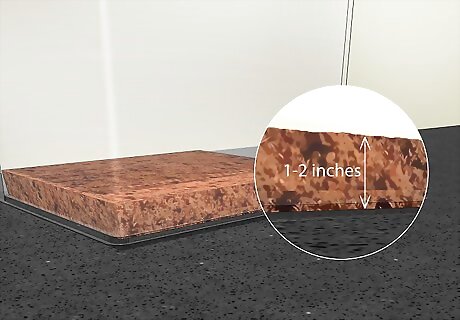
Fill the bottom of the container with 1–2 inches (2.5–5.1 cm) of sand. Use clean sand from a pet supply store and form an even layer on the bottom of the container. The female grasshoppers will lay their eggs in the sand, so you want to make sure it's clean and they have a thick enough layer to deposit their eggs. You can use dry coconut fibers or dry oatmeal flakes instead of sand. Do not add water to the sand or it could make the inside of the container too humid for the grasshoppers.
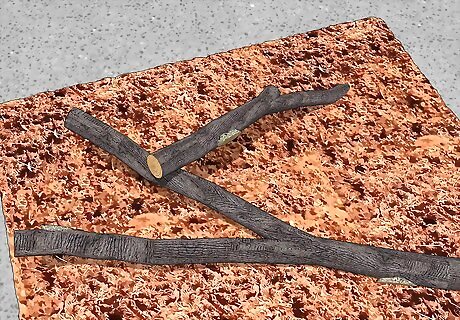
Place some dried branches at the bottom of the container. A few twigs and branches will give your grasshoppers extra surface area for them to sit on, which means they are less likely to fight with one another and more likely to breed. It doesn't need to be much, just a stick or two at the bottom. Grasshoppers that have something to do are more fun to watch!
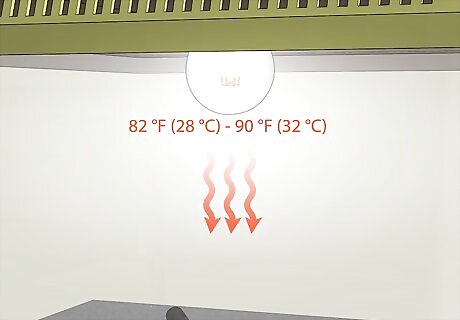
Set up a lightbulb to provide heat to the grasshoppers. Install a light above your container to provide heat for your grasshoppers. The container needs to be kept between 82 °F (28 °C) and 90 °F (32 °C) during day. You can use a standard lightbulb or one designed for reptile habitats. Use a standard thermometer to monitor the temperature of the container. The container can get down to 60 °F (16 °C) at night. You can turn the light off, but make sure the temperature doesn't drop too low and don't forget to turn the light back on in the morning!Warning: Don't set up the lightbulb too close to the lid of the container or it could melt or possibly start a fire.
Mating Your Grasshoppers
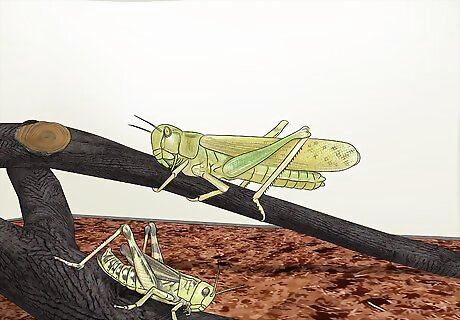
Place male and female grasshoppers into the container. Whether you catch them on your own, purchase them from a pet supply store, or order them online, you need to have a male and a female grasshopper in order to breed them! Female grasshoppers are larger than the males and their abdomens are straight and have no curve. Male grasshoppers have an abdomen that is rounded and dips into a small curve before it tapers to a raised angle.
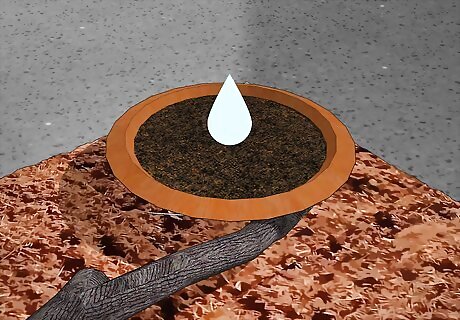
Put a small bowl of damp sand in the corner of the container. Female grasshoppers like to lay their eggs in wet soil so you need to create an egg-laying area for them in the container. Fill a small bowl with 2 inches (5.1 cm) of sand and spray the sand with water until it's damp, but not saturated. Use clean sand from a pet supply store and spray it every other day so it stays damp.
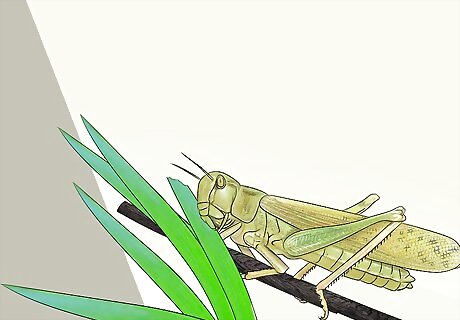
Make sure your grasshoppers have enough food. Grasshoppers will not breed if they're hungry, and they may even resort to fighting and eating one another if they don't have enough food. Feed them fresh grasses every day, especially if you're trying to get them to breed, and remove any dry, uneaten grass. If you live in a really dry area, spray the grass lightly with water to provide water for the grasshoppers. If you pick grass that was treated with insecticide, it could kill your grasshoppers. If you're unsure if the grass is safe, you can purchase feed for your grasshoppers from a pet supply store or online.Tip: If they don't seem to be eating the grass you're giving them, try finding different grasses or giving them lettuce.
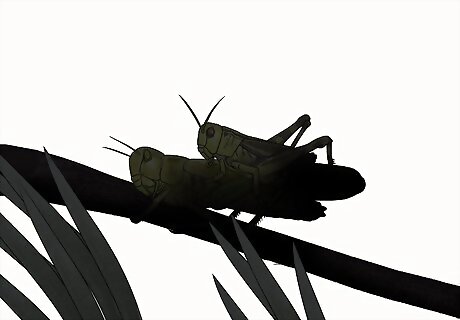
Leave the grasshoppers undisturbed while they're mating. If you have male and female grasshoppers in the container and they are well fed, they will eventually start to mate with one another. The smaller male will climb onto the back of the female and the mating process can take anywhere from 45 minutes to a whole day. It's very important that they aren't disturbed during this process.
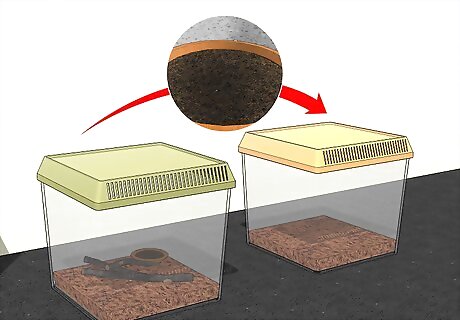
Move the bowl to another container when the grasshopper lays her eggs. After successfully mating, the abdomen of the female grasshopper will start to swell. After 1-2 weeks, she will deposit her eggs into the damp sand of the bowl. Move just the bowl to another container so they can hatch. Do not move the female grasshopper to the new container or she may eat some of eggs. The container can be smaller but needs to be set up just like the larger container. Fill the bottom of the smaller container with 2 inches (5.1 cm) of dry sand and make sure it has proper ventilation and the grasshoppers cannot escape through the top. Make sure the separate container is kept between 82 °F (28 °C) and 90 °F (32 °C).
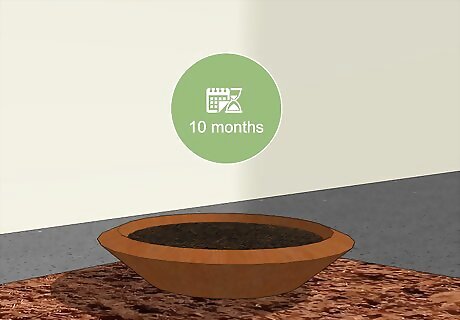
Wait 10 months for the eggs to hatch. Once you've moved the bowl into another container, you need to keep the conditions constant while the nymphs grow inside of the eggs. When they're ready, you'll see tiny grasshoppers that look exactly like adult grasshoppers emerge from the sand in the bowl. Grasshoppers will often mate in autumn and winter so the nymphs can hatch in early summer. As soon as you see the nymphs, you can start giving them grass to eat.
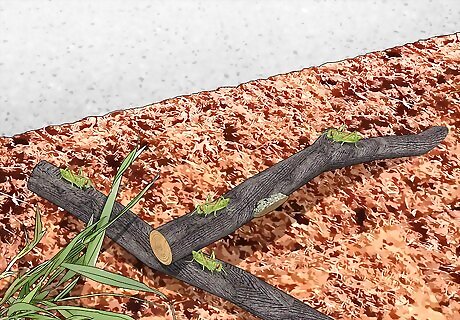
Allow the nymphs to grow for 3 weeks. Before you put them back into the larger container with the other adult grasshoppers, you need to allow the nymphs to grow up enough first. Adult grasshoppers will eat them if you put them back in the larger container before they can fend for themselves. The nymphs will molt, or shed their skin, 5 or 6 times as they grow. Keeping them safe in a separate container will increase their likelihood of survival. Feed them fresh grass every day and remove any grass that dries out.




















Comments
0 comment